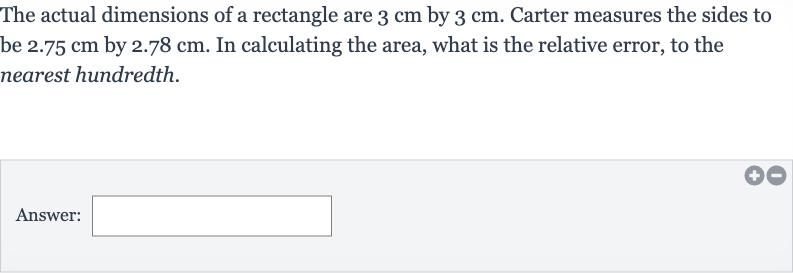Full solution
Q. The actual dimensions of a rectangle are by . Carter measures the sides to be by . In calculating the area, what is the relative error, to the nearest hundredth.Answer:
- Calculate Actual Area: To find the relative error, we first need to calculate the actual area and the measured area of the rectangle.The actual area is the product of the actual length and width.Actual area = Actual length Actual widthActual area = Actual area =
- Calculate Measured Area: Next, we calculate the measured area using the measured dimensions.Measured area = Measured length Measured widthMeasured area = Measured area =
- Find Absolute Error: Now, we find the absolute error, which is the difference between the actual area and the measured area.Absolute error = Absolute error = Absolute error =
- Calculate Relative Error: The relative error is the absolute error divided by the actual area, usually expressed as a percentage.Relative error = Relative error = Relative error = Relative error =
- Round Relative Error: Finally, we round the relative error to the nearest hundredth.Rounded relative error = (rounded to two decimal places)
More problems from Percent error: word problems
QuestionGet tutor help
QuestionGet tutor help
QuestionGet tutor help
QuestionGet tutor help
QuestionGet tutor help
QuestionGet tutor help
QuestionGet tutor help
QuestionGet tutor help
QuestionGet tutor help

